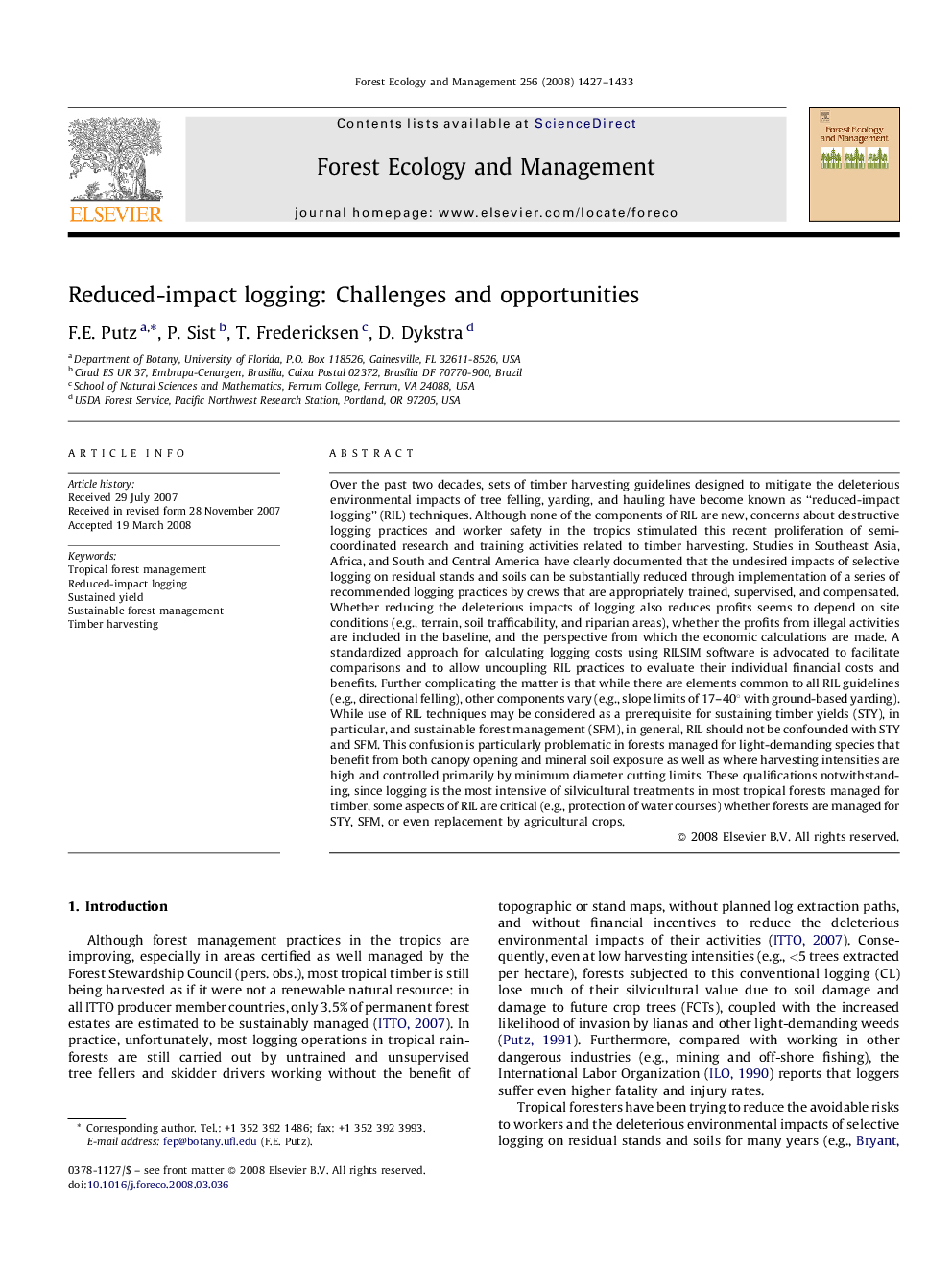| کد مقاله | کد نشریه | سال انتشار | مقاله انگلیسی | نسخه تمام متن |
|---|---|---|---|---|
| 89700 | 159352 | 2008 | 7 صفحه PDF | دانلود رایگان |

Over the past two decades, sets of timber harvesting guidelines designed to mitigate the deleterious environmental impacts of tree felling, yarding, and hauling have become known as “reduced-impact logging” (RIL) techniques. Although none of the components of RIL are new, concerns about destructive logging practices and worker safety in the tropics stimulated this recent proliferation of semi-coordinated research and training activities related to timber harvesting. Studies in Southeast Asia, Africa, and South and Central America have clearly documented that the undesired impacts of selective logging on residual stands and soils can be substantially reduced through implementation of a series of recommended logging practices by crews that are appropriately trained, supervised, and compensated. Whether reducing the deleterious impacts of logging also reduces profits seems to depend on site conditions (e.g., terrain, soil trafficability, and riparian areas), whether the profits from illegal activities are included in the baseline, and the perspective from which the economic calculations are made. A standardized approach for calculating logging costs using RILSIM software is advocated to facilitate comparisons and to allow uncoupling RIL practices to evaluate their individual financial costs and benefits. Further complicating the matter is that while there are elements common to all RIL guidelines (e.g., directional felling), other components vary (e.g., slope limits of 17–40° with ground-based yarding). While use of RIL techniques may be considered as a prerequisite for sustaining timber yields (STY), in particular, and sustainable forest management (SFM), in general, RIL should not be confounded with STY and SFM. This confusion is particularly problematic in forests managed for light-demanding species that benefit from both canopy opening and mineral soil exposure as well as where harvesting intensities are high and controlled primarily by minimum diameter cutting limits. These qualifications notwithstanding, since logging is the most intensive of silvicultural treatments in most tropical forests managed for timber, some aspects of RIL are critical (e.g., protection of water courses) whether forests are managed for STY, SFM, or even replacement by agricultural crops.
Journal: Forest Ecology and Management - Volume 256, Issue 7, 20 September 2008, Pages 1427–1433